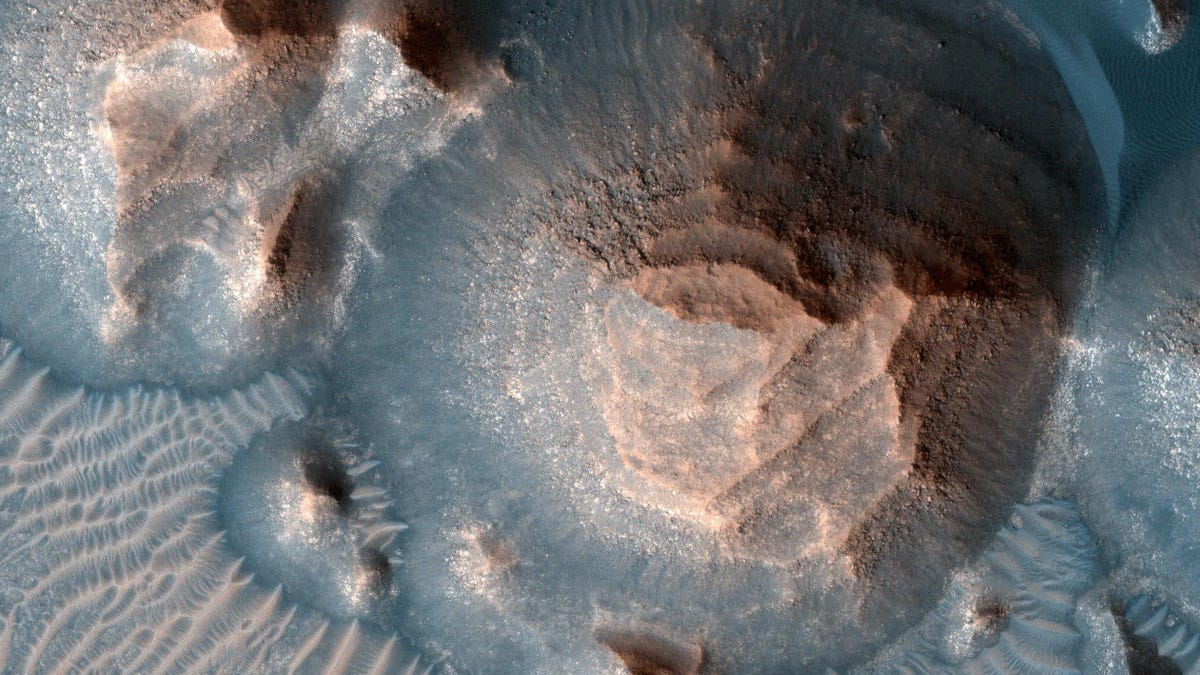NASA says 'super eruption' volcanoes on Mars would have blocked out the sun
Mars was having some serious volcanic temper tantrums about 4 billion years ago.
There are volcanic eruptions, and then there are volcanic "super eruptions." NASA is painting a picture of a past Mars that would've been a hellscape of molten rock, gas and ash. Scientists are investigating the history of Arabia Terra, a region in northern Mars, and they've discovered that it likely hosted thousands of massive super eruptions.
In a statement Wednesday, NASA described super eruptions as "so powerful they release oceans of dust and toxic gases into the air, blocking out sunlight and changing a planet's climate for decades."
A paper published in the journal Geophysical Research Letters shows evidence that Arabia Terra hosted many mind-boggling volcanic explosions over a 500-million-year period about 4 billion years ago.
NASA said a super eruption could blast the equivalent of 400 million Olympic-size swimming pools worth of molten rock and gas. After this epic freak-out, the volcano then collapses into a large hole known as a caldera. We have volcanic calderas on Earth, including the massive craterlike caldera in Yellowstone National Park in the US.
The researchers looked at seven calderas in Arabia Terra on Mars that were already suspected of having volcanic origins. The team went searching for the ash that ancient eruptions would've left behind. They found it.
Using images and data from NASA's Mars Reconnaissance Orbiter, the scientists tracked where the ash would've landed from the volcanoes and found well-preserved layers of the material. It would've taken thousands of the eruptions to deposit all the ash.
The data on Mars' volcanic history will keep scientists plenty busy as they work out what impact the super eruptions might've had on the red planet's climate. There's also a question as to why Arabia Terra is the only place on Mars that appears to have been home to these explosive volcanoes.
"People are going to read our paper and go, 'How? How could Mars do that? How can such a tiny planet melt enough rock to power thousands of super eruptions in one location?'" said NASA Goddard geologist Jacob Richardson, a co-author of the study. "I hope these questions bring about a lot of other research."


